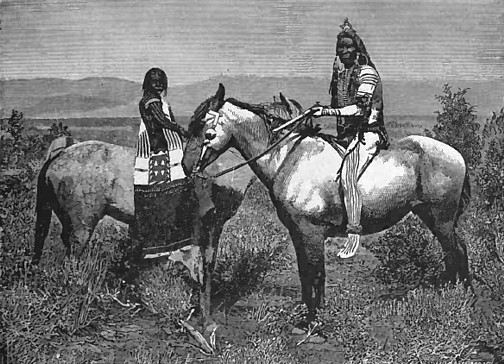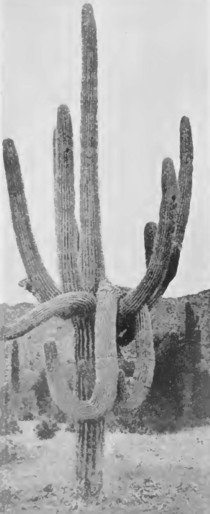For years a mining operation of the oddest sort has been prosecuted in the Meteor, or Coon Butte, crater, a few miles southeast of Canon Diablo station on the main line of the Santa Fe system. "What is being sought is a mass of meteoric iron, believed by the operators to lie nearly a thousand feet deep, down below the floor of what once was thought the crater of an extinct volcano. But the ''crater" is in sandstone, a rock that is distinctly of aqueous deposition. In January, 1903, the ground was secured by D. M. Barringer and associates, Pennsylvania capitalists, who organized the Standard Iron Company and employed a scientific Arizonan, S. J. Holsinger, to demonstrate his theory that the meteor still was there. There was a commercial side to the transaction, for the iron fragments found on the surface, scattered around the lip of the crater for miles distant, carry a large percentage of nickel and form a metallic combination much like the highest grade of battleship armor steel. The crater is about 600 feet deep and averages about 3,800 feet in diameter. Its lip is raised above the plain about 130 feet and the stratification of the sandstone has been up tilted from the impact of the celestial visitor. The crater is floored with a fine silicious dust, "rock flour," simply comminuted silica, where the sandstone of the plain has been vitrified by the intense heat of the impact, as it was ground under an infinite force that displaced at least 1,000,000 tons of sandstone and that up heaved and threw out about 200,000 tons more, while the lifted or disturbed rock around the edge has been estimated at above 300,000,000 tons weight. This "rock flour" will pass through a 200-mesh screen. No particle is as large as an ordinary grain of sand.
For five and a half miles from the crater have been found fragments of meteoric iron and hundreds of specimens have been sent to museums all over the world. It is probable that nowhere else has there been found such a quantity. Meteors have been known to fall in the locality within the past few years. The composition of the metal found is fairly uniform, comprising about 92 percent iron, about 8 per cent nickel, with native platinum and iridium present to the extent of three-fourths of an ounce to the ton of metal, while there has been demonstrated the presence of microscopic diamonds. Possibly twenty tons of the iron were picked up on the plain and shipped, mainly by Trader Volz of Canyon Diablo, the largest piece, now in the Field Columbian Museum at Chicago, weighs in at 1,013 pounds. Very little iron has been found within the crater, very logically, for its bottom is deeply covered with talus and loose material from the borders.
Having demonstrated to their satisfaction that a meteor made the hole and that at least nine-tenths of the metal that struck the earth must yet remain below the earthy covering into which it plunged, Mr. Barringer and Mr. Holsinger proceeded to dig. A 200-foot shaft ran into wet "rock flour" to such an extent that no further sinking was possible. Drill holes were sunk, however, as far down as an unaltered red sandstone that was found in place, as in the Grand Canyon of the Colorado, seventy miles distant. In all twenty-five holes were bored. In some of them, at depths around 400 feet, further progress was blocked by striking undoubtedly what was meteoric iron, as shown by analyses of the material brought up. Yet it is not claimed that the central mass has been found.
The probable size of the meteor has been made the subject for much calculation, based upon artillery tabulations. One scientist has concluded the mass might have been 1,500 feet in diameter, but others have concluded that, with a final velocity of 9,000 feet a second, the estimated penetration of 900 feet in soft rock could have been accomplished by the fall of a body only one-twenty fifth the weight of the maximum estimate made. Save for the fragments that may have separated from it in its flight through the earth's atmosphere, it is expected to find it intact, probably a bit to one side of the center of the crater, as indicated by the different tilting of the strata on opposite sides.
More modern theory of meteor impact allows that most meteors explode in the atmosphere prior to impact and that no large body of meteorite iron lies at the bottom of large impact sites. This explains why, after such an exhaustive search, no valuable piece of iron was found, in spite of the fact that chunks of meteorite are found all around the Canyon Diablo impact site.
Return
to The Arizona Page:
Arizona Gold Rush Mining History



